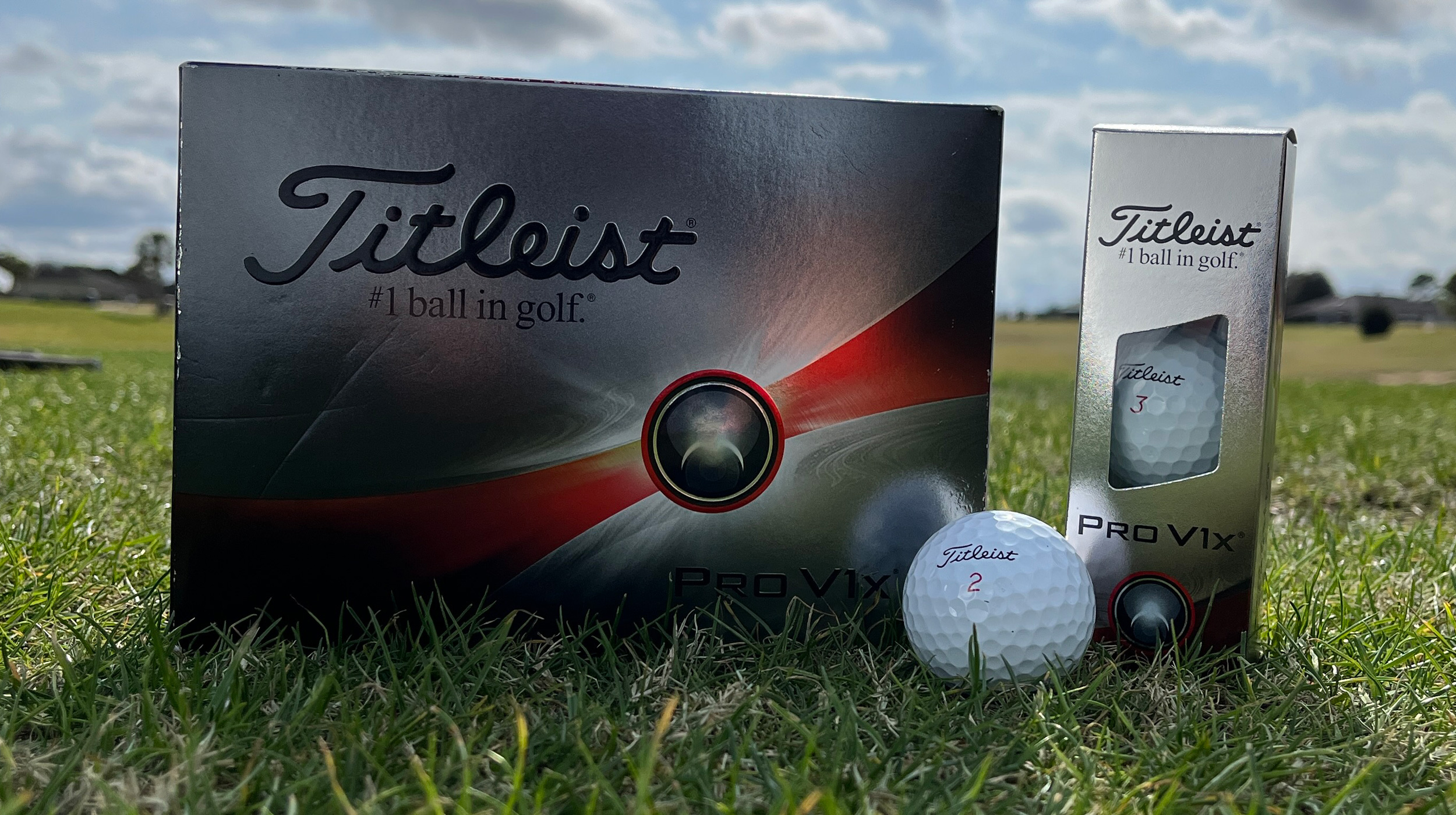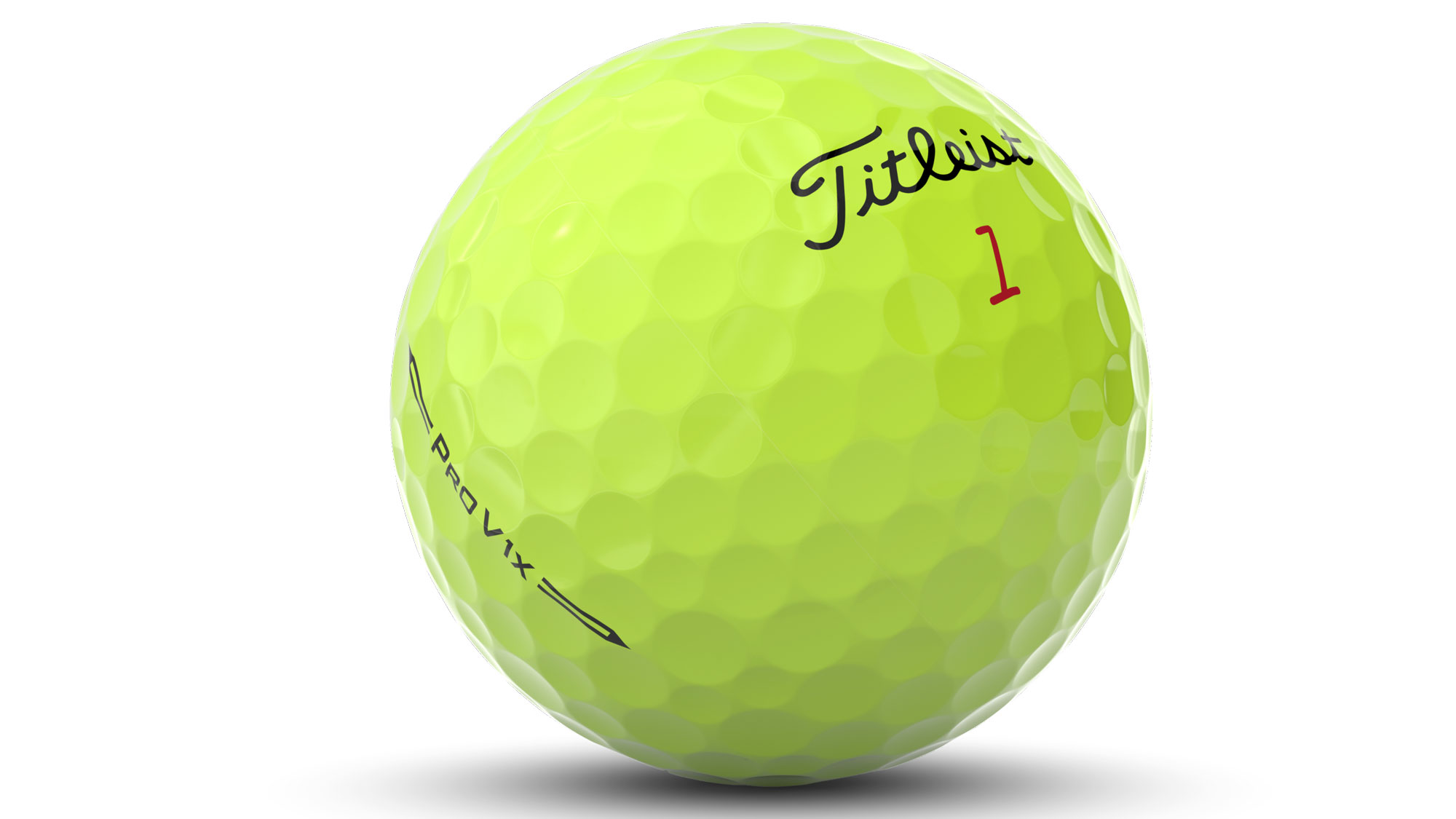
Two years on from the previous updates, Titleist has come to market with an all new version of the wildly popular Pro V1x for 2023. Pitched at those in search of a higher ball flight and increased spin with a slightly firmer feel than the Pro V1, the latest Pro V1x has already been seen out on Tour. In fact, Will Zalatoris described his decision to switch into it as, “a no brainer”.
The main upgrade in the Pro V1x comes from a new high gradient ‘Dual-Core’ construction. From outside to inside, the center of the ball gets progressively softer. In the Pro V1x there is an inner core which has been made 44% bigger. The engineers at Titleist say these features work to reduce spin in the long game, which helps increase speed, and provide a more stable flight.

It’s important to note at this point that in 2021, I went through a golf ball fitting with Titleist and it was the Pro V1x that emerged as the right model for my game. It’s fair to say that I’m not a particularly high spin player so the extra flight of the Pro V1x gave me not only the distance, but particularly the control, I’m looking for when approaching the greens.
I wanted to see how the Titleist Pro V1x 2023 compares so I took both old and new versions with me to the course to test. I hit them on a launch monitor and on the course at Prince’s Golf Club to see if this is one of the best premium golf balls on the market this year. I also hit the new Titleist Pro V1 2023 golf ball during the same session.
Whilst it was with the mid irons that I noticed the greater leaps in performance from the Pro V1 2023, it was with the driver where the new Pro V1x impressed most. During my testing there was a modest reduction in spin versus the previous generation but a more noticeable jump in ball speed. Of the drives I hit on the launch monitor with the new version, I gained just over 1mph. Of course, variations in strike make the true gain here hard to quantify but it is worth noting my carry distance was two yards longer on average.
When compared to the new Titleist Pro V1, the Pro V1x launched just over a degree higher off the tee and delivered 2 yards of increased peak height.

Again, the higher launch and overall flight of the Pro V1x was notable during my 7-iron testing (the peak height averaged 4-yards higher with the Pro V1x). For lower spinning golfers, this should translate into a useful steeper descent angle and more stopping power when hitting into the greens. Higher spin players could potentially find the additional flight too much. It is most definitely worth testing the different models - and for those who need even less spin in the long game, the Titleist AVX golf ball remains a great option.
The final part of my launch monitor testing involved hitting a series of 50-yard pitch shots. Interestingly, both new Pro V1 versions provided me with a little more spin than their respective outgoing models. The difference was minimal (just under 100 rpm with the Pro V1x) but it was good to see such a tangible separation in performance from long game to short game.

How Does The 2023 Titleist Pro V1x compare to the Pro V1?
Finding the best golf ball for your game is crucial and can make a significant difference to your scoring. Of the two Pro V1 golf balls, the x version is designed to be the higher flying and spinning model. For those whose long game spin is under control, this can help them find a better flight, and more stopping power when hitting into the greens. The Pro V1x will also feel a little firmer too.
My final observation on the performance of the new Titleist Pro V1x relates to what happened when I played 18-holes on a very windy day at Prince’s Golf Club. This proved an outstanding testing ground to see the strength of the ball flight. Analysing my Arccos data from the round, the two areas I performed best in were ‘Approach Game - Shots From The Fairway’ (SG +1.0) and ‘Driving Game - Distance’ (SG +0.7). Given the cold and windy conditions, this was a pleasingly positive outcome.
Whilst the differences between the two generations might not be drastic, I was pleased to see some subtle improvements. In particular, there was a gain in carry distance both off the tee and when hitting into the greens. Crucially, this gain didn’t come at the cost of any less control which is vital when choosing a golf ball.







